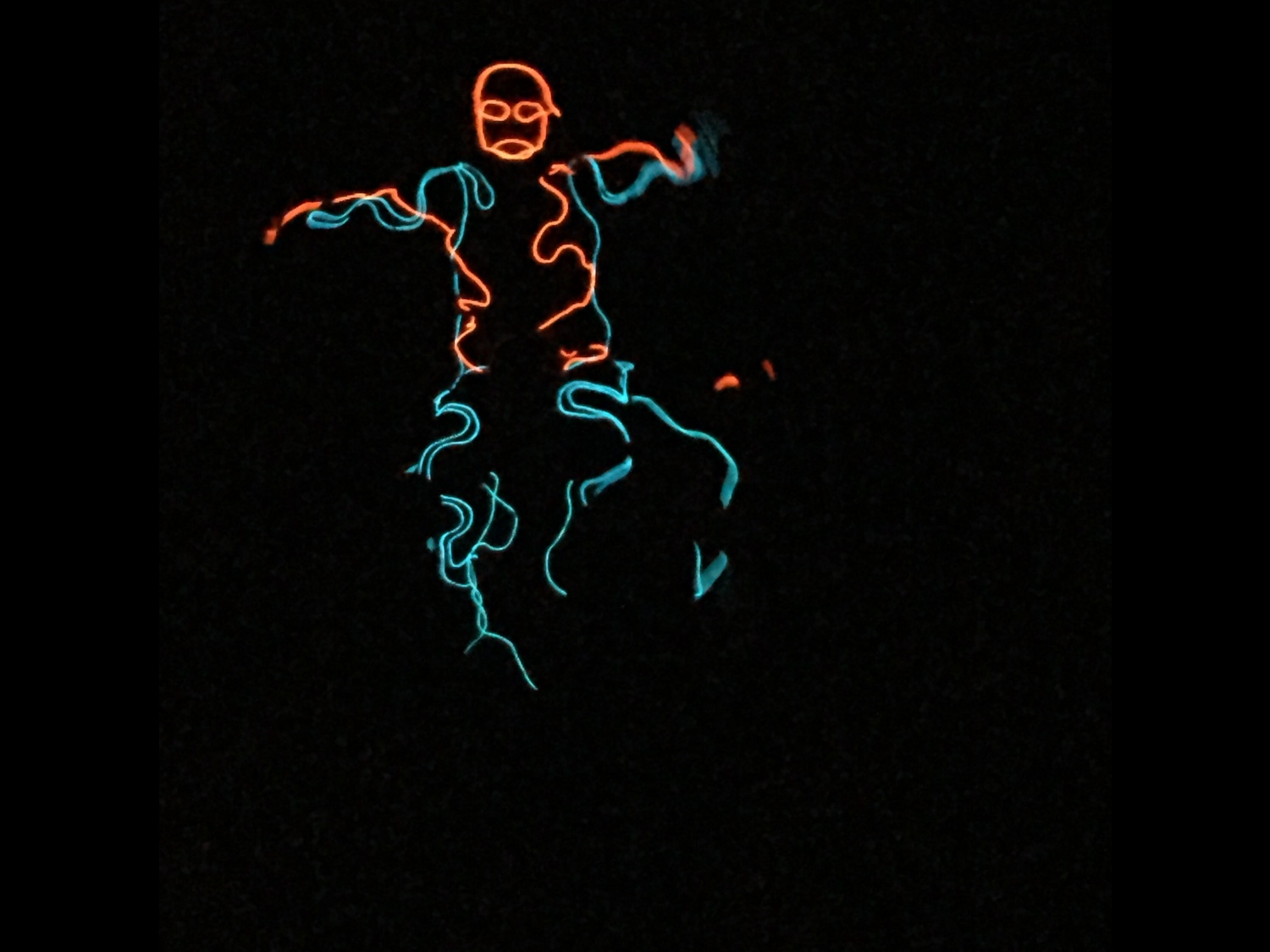
News
Cambridge Residents Slam Council Proposal to Delay Bike Lane Construction

News
‘Gender-Affirming Slay Fest’: Harvard College QSA Hosts Annual Queer Prom

News
‘Not Being Nerds’: Harvard Students Dance to Tinashe at Yardfest

News
Wrongful Death Trial Against CAMHS Employee Over 2015 Student Suicide To Begin Tuesday

News
Cornel West, Harvard Affiliates Call for University to Divest from ‘Israeli Apartheid’ at Rally
“AcousticaElectronica” Subverts, Immerses
Imagine yourself on the dance floor an hour before midnight, but you’re not dancing. Instead, you watch. The room is dark save for a spotlight projected on a man. Glow-in-the-dark dots on the gloves of the performers move around you like flickering neon lights. Suddenly, one of the glowing hands flashes in front of your face. You make eye contact with the dancer: a woman covered in black from feet to eye shadow who gives you a fierce stare before moving away.
This was one of the many mesmerizing moments at ToUch’s “AcousticaElectronica,” an immersive theatrical event that played at the OBERON on Feb. 12. Meshing classical and electronic music with dance and acrobatics, the show managed to subvert and transform perceptions of both beloved tropes and theater for an innovative experience.
“AcousticaElectronica” told its story using dance and music and no dialogue, except for a brief introduction of the characters at the beginning. This narrative decision, along with the show’s use of seemingly distinct vignettes to advance the plot, created a story that was ambiguous and often open to interpretation. The fragments of information that are available introduce the audience to Carmen (Sarah Naughton), who is a performer and the lover of the MC, Dorian Gray (Sebastiani Romanaglo). Her good friend, the Conductor (Travis Artz), is a struggling composer. When tensions increase between the Conductor and Dorian Gray, the characters’ lives soon spiral downhill toward a tragic conclusion.
While the use of familiar characters gave the show its foundations for subversion, the technical design elements, such as costumes, further emphasized the characters’ roles and the way they played on common tropes. For instance, Dorian Gray donned a simple black suit and a mask, both embellished with shards resembling mirrors. As the only adornments on his costume, the mirrored jewels suggested his obsession with appearances, a notable trait found in his eponym from Oscar Wilde’s novel. Meanwhile the mask recalled the crafty, domineering Phantom of the Opera—a role that Dorian also fulfilled throughout the show by manipulating characters from the background, including a number in which he puppeteered various dancers.
The show’s greatest element, however, lay in its impressive music and dancing. The accompanying music was an EDM remix of famous classical works that seamlessly blended the sound of orchestral instruments with electric guitar, synths, and harsh beats. “Habanera,” the famous aria in Georges Bizet’s “Carmen,” remained an operatic feat, sung flawlessly and in keeping with classical tradition by Naughton. Under the touch of “AcousticaElectronica,” however, it also gained a modern quality as the DJ (Danny Satori) spun a head-banging, toe-tapping rhythm to support her powerful and operatic gusto. The performers likewise successfully meshed ballet with contemporary and modern dance in all of their numbers—a subtle mix that asserted the innate similarities between the styles.
Furthermore, by experimenting with the boundaries of theater and performance art, “AcousticaElectronica” created a unique experience for the audience, both intimate and exciting. Performers executed graceful acrobatics on trapezes and ribbons in between the storytelling vignettes, recalling a disco-esque Cirque du Soleil. Meanwhile, the dance floor setting allowed for immersive, creative staging that employed every corner of the room, from the mezzanine to the actual stage itself. Such endeavors to transform storytelling were the greatest success of “AcousticaElectronica.”
In this way, among many others, “AcousticaElectronica” not only stunned with its visual effects and dance numbers but also managed to use these histrionics to develop a connecting thread that suggested the temporal universality of stories and themes. It was a romp for a weekend night—and a thoughtful one at that.
ToUch’s “AcousticaElectronica” will return to the OBERON on Mar. 25.
—Staff writer Ha D.H. Le can be reached at ha.le@thecrimson.com.
Want to keep up with breaking news? Subscribe to our email newsletter.

